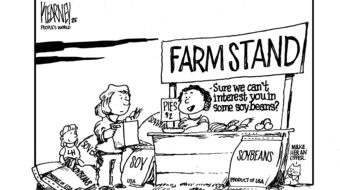
The nation’s official unemployment rate fell in January to 8.3 percent, down from December’s 8.5 percent, according to the Bureau of Labor Statistics.
Private businesses said, in a separate survey, that they added 257,000 jobs. If one subtracts a 14,000 drop in government jobs, the economy actually added 243,000 jobs last month.
Heidi Shierholz, economist at the Economic Policy Institute, said the overall news was good but warned that it is too early to start partying. She said that at the current rate of improvement it would take until 2019 for unemployment rate to drop to the 5 percent pre-recession level.
Nevertheless, the country’s jobless rate continued an unmistakably steady decline, dropping by 0.8 percentage points since August and to the lowest point since February 2009. The number of jobless workers dropped to 12.8 million, down from December’s 13.1 million.
Disturbing, however, is the fact that the number of long-term unemployed (those out of work for 27 weeks or more) remained almost unchanged at 5.5 million, almost 43 percent of the total unemployed.
Those long-term unemployed face a loss of benefits on Feb. 29 unless Congress extends the benefits, and already the House’s ruling Republicans are resisting. A conference is under way between the Senate and the House over two sharply different one-year extensions of the unemployment insurance program passed last year.
The Republican extension would slash federal benefits, impose harsh new restrictions and, the labor movement charges, essentially dismantle the program.
The GOP bill cuts in half federal benefits in the highest unemployment states, allows mandatory drug testing of claimants, makes the unemployed pay for their own re-employment services, denies benefits to people without high school diplomas or GEDs and allows states to cut benefits or divert benefit funds to other uses.
One disturbing feature in the new jobless figures released today is the fact that 1.8 million more people this month than last month are listed as “not in the labor force.” This , of course, contributed to the lower unemployment figure.
Still, there were increases in jobs in many industries. Construction, for example, added 21,000 jobs, on top of a 31,000 job gain in December. Despite those real gains, however, 1.5 million construction workers remain unemployed, for an official unemployment rate of 17.7 percent in that sector.
Factories added 50,000 jobs in January, in addition to the 32,000 added in December. Last year, for the first time in a decade, factories showed an annual jobs gain. Official factory worker unemployment dropped in 2011 from 9.9 percent to 8.4 percent.
AFL-CIO President Riochard Trumka said, “The seeds of sustainable job growth are clearly present – if Republicans in Congress do not succeed in weakening the recovery.
“Republican leaders, who are admittedly unconcerned with the poor and still pressing for ill-timed austerity in Washington and state capitals, run a very real risk of putting this incipient recovery at risk.
“President Obama, by contrast,” said Trumka, “has laid out a comprehensive agenda for job creation and broadly shared prosperity, rather than wealth for a few.”
Photo: whitehouse.gov










